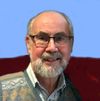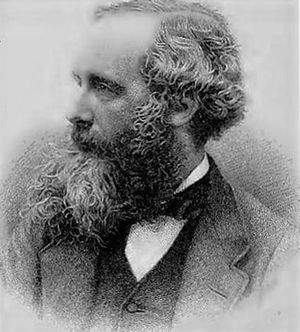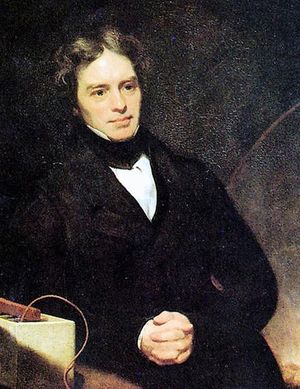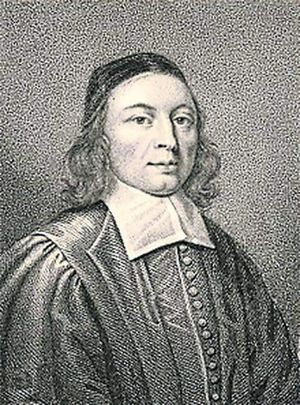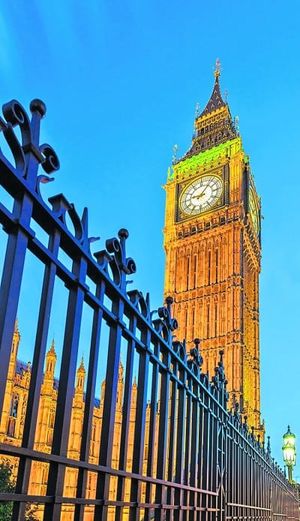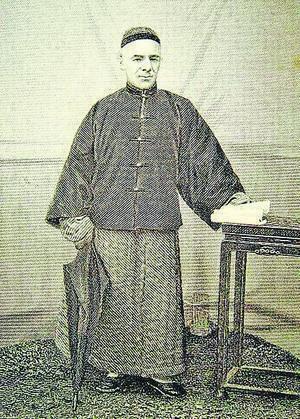William Booth (1829-1912)

William Booth was the founder of the Salvation Army, a denomination now found in 124 countries and having 800 corps (churches) in the UK.
William was born in Nottingham, on 10 April 1829. His father, Samuel, was a speculative builder who lived to make money. When 49 and a widower, Samuel Booth married Mary (33), who became William’s mother.
They rarely attended their parish church, but William was sent to Sunday school and was enrolled at Sampson Biddulph’s academy, a commercial school. Biddulph was a Methodist local preacher who became a trustee of the newly built Broad Street Wesleyan chapel in 1837.
In the summer of 1842, a downturn in the economy prevented Samuel from paying the mortgages on his rented properties. He was ruined and bound William as apprentice to Francis Eames, a Unitarian pawnbroker in the poor Goosegate area of Nottingham. William’s father died shortly after.
As William walked to work, he encountered ragged, starving children begging for bread. In the pawnbrokers, he saw women trading in their last precious possessions to buy drink for their husbands, who would beat them if they refused. This fuelled his future burning desire to help such victims of poverty and vice.
Conversion
William, now 15, had started attending the Broad Street Chapel and sat under the preaching of Isaac Marsden from Doncaster.
In a corner of the meeting room, he was convicted of a recent sin. He had received a silver pencil case from a friend in return for a favour, but William had been guilty of deception. He returned the case with a confession, and was walking back along the pavement when he was given a great sense of forgiveness and peace.
Shortly after this, a fever brought him near to death. His bosom friend Will Sansom wrote telling him to hurry and get well again, to help him in a mission he had started in a slum area.
William recovered, and after working till 7.00pm and then visiting the sick, they stood on a chair in the street, sang a hymn and talked to the people, inviting them to a meeting in a house. Here, often, someone was saved. This was followed by visiting the dying, and then returning home by midnight, and getting back to work by 7.00am.
William used every opportunity to preach the gospel and, when a poor girl died of consumption, they brought her coffin into the snowy street and held a service there to witness to her neighbours. He received no encouragement from his church.
William was later grief-stricken when godly Sansom (who after Booth had spoken in the open air would kneel on the pavement to wrestle in prayer) died of tuberculosis in 1848.
James Caughey
In 1846, when aged about 17, Booth was influenced by a visiting American preacher, James Caughey, who adopted a conversational style of preaching, calling for decisions and ‘sanctification’. Such novelties disturbed the churches. Booth also used to spend his 40-minute lunch break reading Charles Finney’s Lectures on revivals (1835).
He believed in keeping the Lord’s Day free from work, but his boss kept him working till the early hours of Sunday morning. When William said he would work till midnight Saturday, and return at midnight Sunday, he was fired on the spot.
But within a week his boss relented and put him in charge of everything before leaving for a holiday in Paris. William became an accredited local Wesleyan Methodist preacher and regularly took the gospel to villages outside Nottingham.
William, now 19, thought there would be better opportunities in London for employment, to help support his mother and sisters, and for preaching. He was to be disappointed, and ended up in Kennington in the trade he detested, as assistant to William Filmer, a pawnbroker.
In 1851 he left the Wesleyans and joined the Methodist Reform Church at Binfield Road, Clapham. He resigned from pawnbroking on 10 April 1852, his 23rd birthday, to become a full-time preacher. In this he was funded by Edward Rabbits, a wealthy boot-maker. It was on this day too that he fell in love with his future wife.
Catherine Mumford
Roy Hattersley, in his book on William Booth, describes Catherine Mumford, as ‘one of the most extraordinary women of the nineteenth century’. Both William and Catherine were sure of their love for each other from the start and became engaged on 15 May 1852.
When sixteen she received assurance of salvation through reading Wesley’s hymn, ‘My God I am thine, what a comfort divine, what a blessing to know that my Jesus is mine’. She thought deeply about her faith, and could express herself eloquently — a gift that would blossom later.
William found that with so many lay persons being allowed to fill the pulpits, he had too few opportunities to preach. Catherine was acquainted with the Congregationalists, and had a friend in Rev. Dr David Thomas.
With much schism and instability amongst the Methodists at this time, the Congregationalists seemed a more stable environment for William’s future ministry, and so they joined them in June 1852.
William loathed studying theological books, but Catherine urged him to do so, and it was required of him to qualify as a Congregationalist minister. He was given two approved books to read, George Payne’s Divine society (1836) and Abraham Booth’s Reign of grace (1814).
Reading chapter 3 of the latter, he threw the book against the wall when he read ‘where any are chosen, others must be refused’. He failed to see that Calvinists also believe the gospel must be proclaimed to all, including those steeped in vice.
William was then welcomed by the Spalding Reform Methodists. He was still just 23, and on his first Sunday 14 people were saved. The following week a similar number were saved at Donnington.
He introduced the penitent form at the front, where, following an appeal, people would be asked to kneel in repentance and commit themselves to Christ. This was followed by counselling and subsequent visitation.
Evangelist
The Primitive Methodists had a gifted itinerant lady evangelist, Miss Buck, but female preachers generally were rare. Catherine, however, objected to a sermon by Dr Thomas in which he implied women were morally and intellectually inferior to men, and she sent him a 1200-word anonymous letter arguing for equality.
She based her letter on Galatians 3:28: ‘There is neither Jew nor Greek, there is neither bond nor free, there is neither male nor female: for ye are all one in Christ Jesus’.
William still believed that women had a fibre more in their hearts and a cell fewer in their brains, though they were morally equal in their being! This had been debated in their letters before their marriage.
Denominational disputes upset William, and he returned to join the Methodist New Connexion Church in London in 1854. He was again supported by Rabbits, who had also joined the Connexion, and attended Dr William Cooke’s seminary in Camberwell.
There William soon became restless while trying to grapple with Latin and Greek, ‘which I saw at a glance could not help me in the all-important work that lay before me’.
Dr Cooke recognised that William was not a scholar but a natural evangelist and determined to support him in that role. So Booth found himself preaching what was intended to be a polished sermon before Dr Cooke and his family.
But William saw heaven and hell, and Christ standing between them with his arms outstretched inviting sinners to be saved. He abandoned his notes to give a gospel call (he would dramatically drop down in the pulpit to represent a ship sinking under a load of sin, then jump on to a chair and wave a white handkerchief to signal a plea to be rescued). This was not the usual polite sermon, but it saved Cooke’s daughter!
Uncertain future
William and Catherine were married on 17 June 1855 and, after returning from honeymoon, William left his sick wife so that he could evangelise in Yorkshire. He visited Hull and then Sheffield, where Catherine joined him.
They went on to Dewsbury and Leeds, where 800 conversions were recorded. While in Halifax, William Bramwell Booth was born on 8 March 1856. He would later become his father’s second in command.
In 1857 the Conference transferred Booth to Brighouse and Gateshead, where the latter’s Bethesda became dubbed ‘The converting shop’ by the local iron-workers. It was here that Booth’s wife began to speak in public and pray in church meetings.
When the Liverpool Conference refused to release Booth for evangelistic work, asking him ‘to submit to their ruling’, Mrs Booth cried out: ‘Never!’ So they resigned from the New Connexion in order to have freedom to preach and move about as they believed the Lord was leading them.
William had to lose his house and set out with his wife and four children into an uncertain future, but he was trusting in God.
Nigel Faithfull
The second article is here: William Booth (2)


